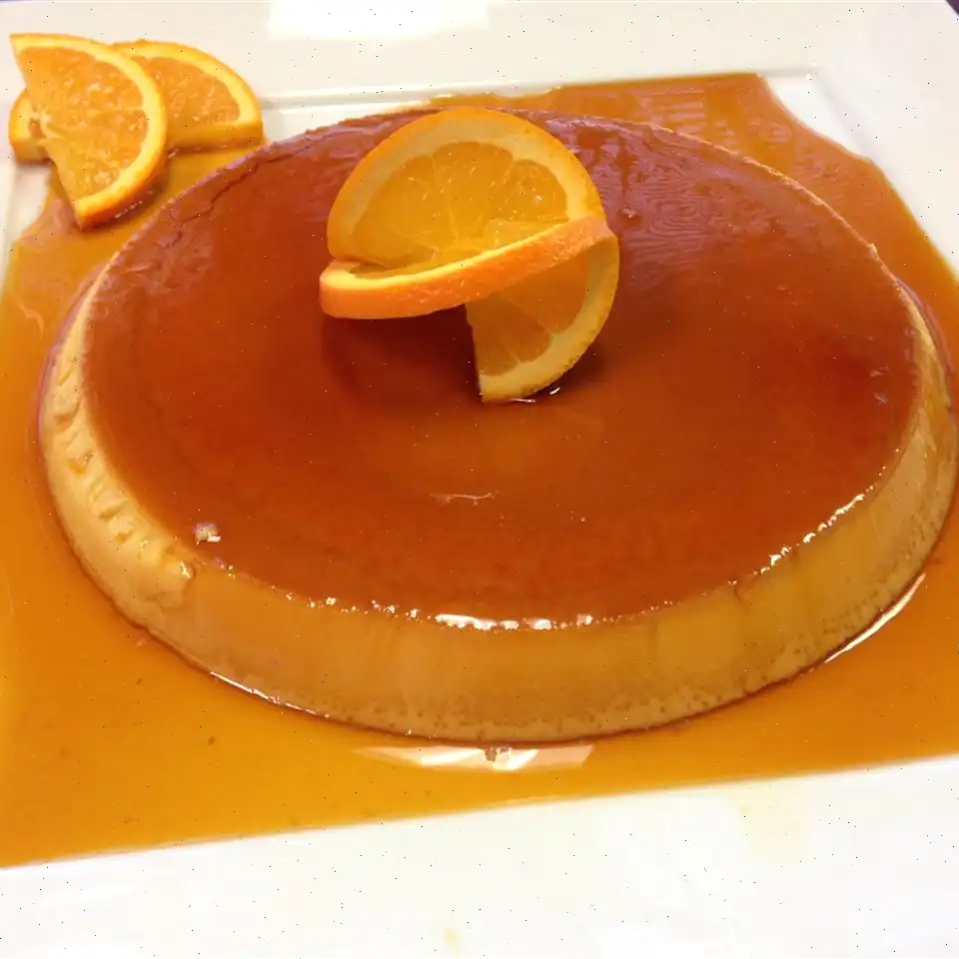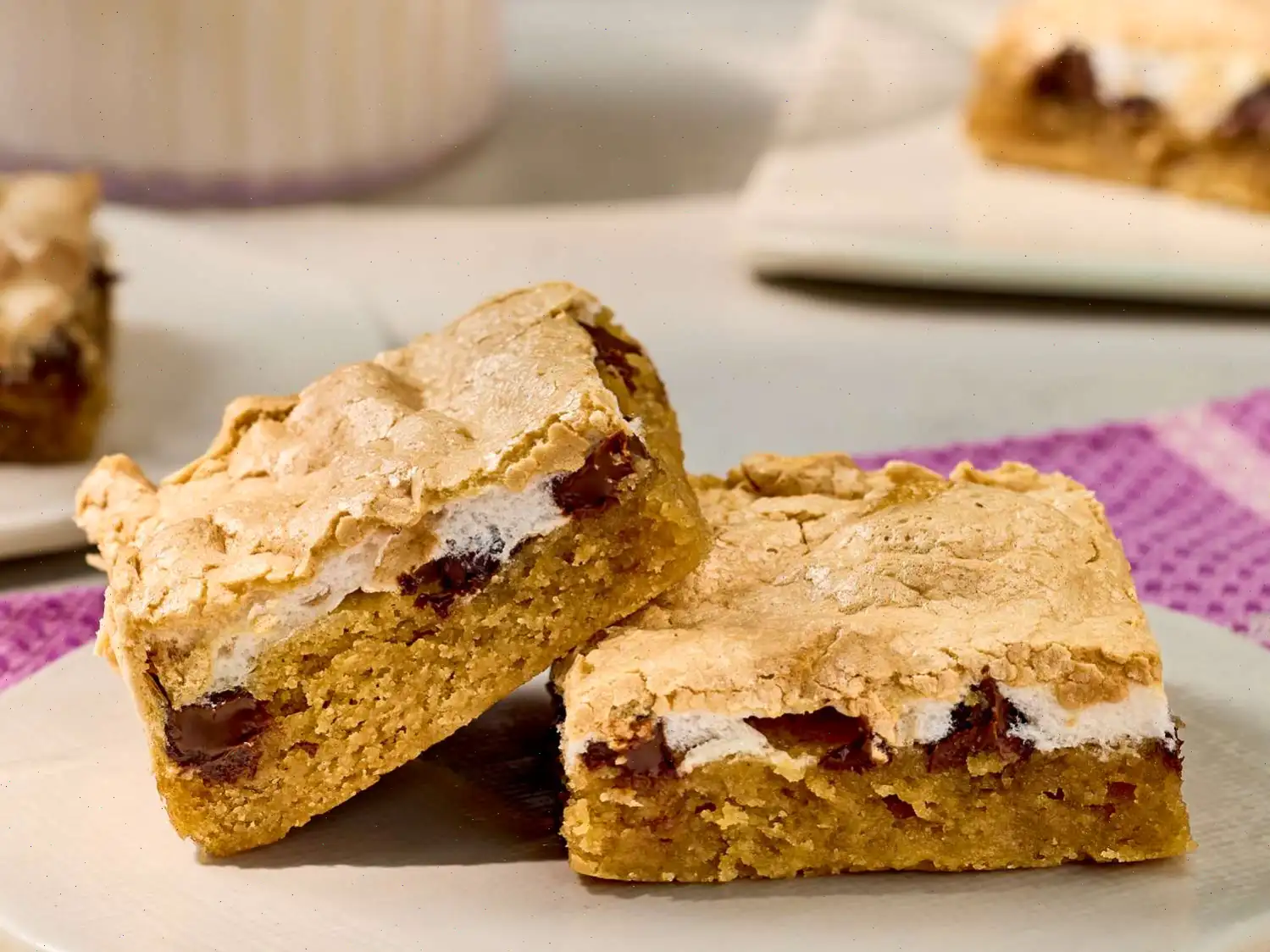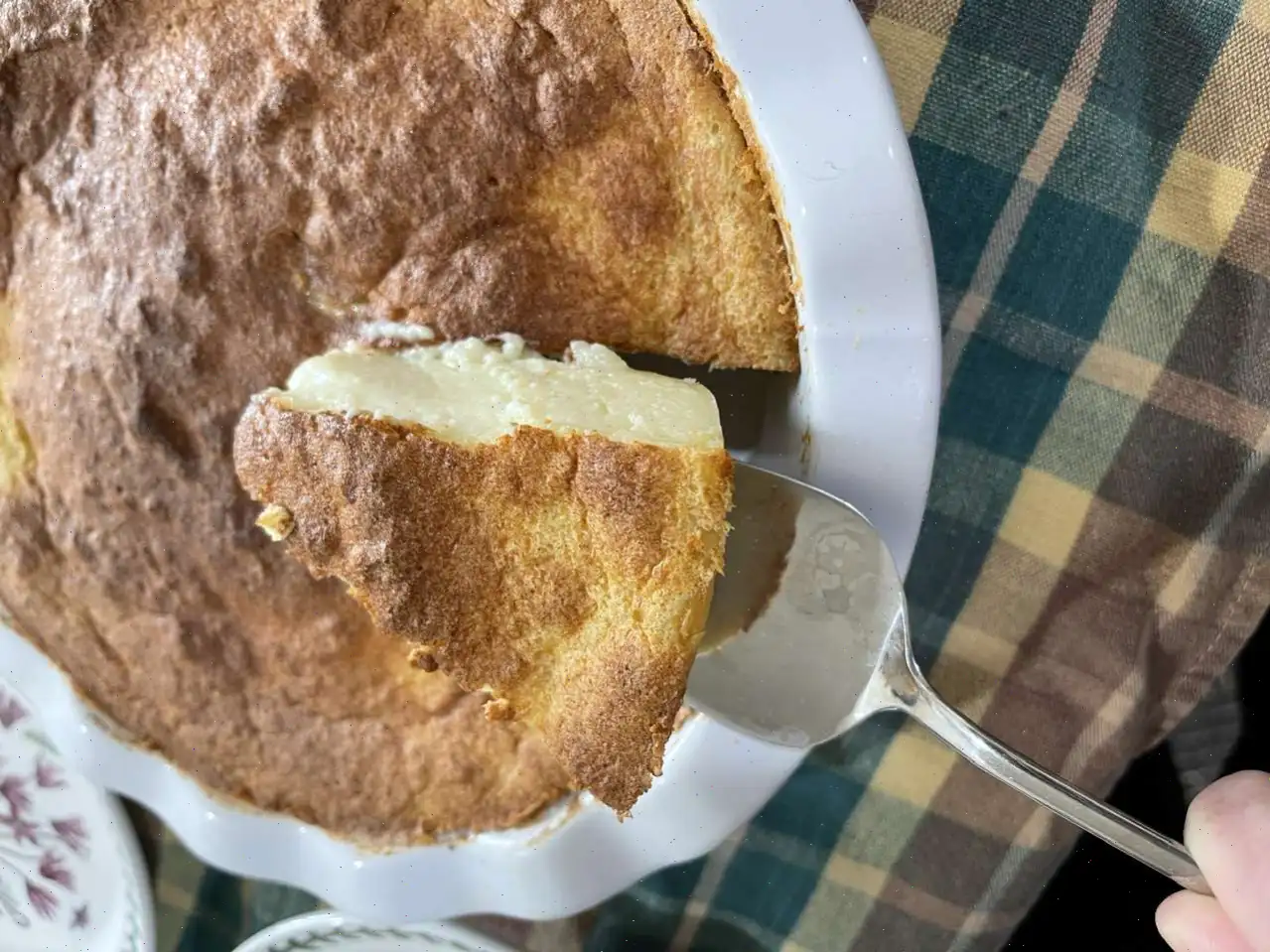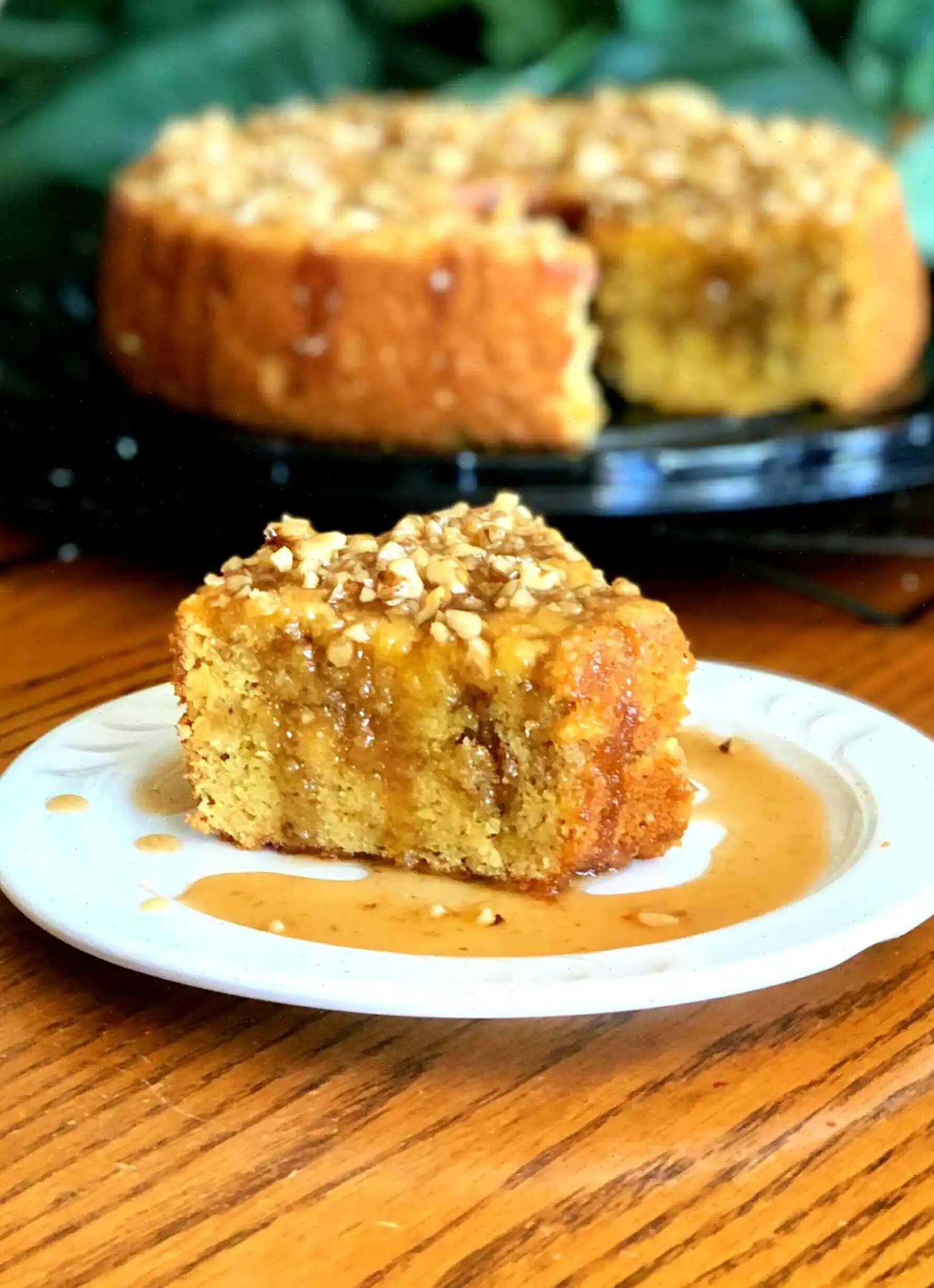
Flan Mexicano (Mexican Flan) Recipe
Ingredients (Original recipe for 8 servings)
- 1 cup white sugar
- 1 (14 ounce) can sweetened condensed milk
- 1 cup whole milk
- 3 large eggs
- 3 large egg yolks
- cup freshly squeezed orange juice
- 1 tablespoon grated orange zest
- 1 tablespoon vanilla extract
- 1 tablespoon cornstarch
- 1 cup heavy cream
Directions
- Place sugar into a heavy saucepan over medium-high heat. Stir constantly until the sugar melts and turns a golden amber color, about 10 minutes. Be sure to watch carefully as the syrup can burn quickly once it starts changing color.
- Once the caramel is ready, carefully pour it into a flan mold and set it aside to cool.
- Preheat the oven to 350F (175C) and position an oven rack in the middle.
- In a blender, combine sweetened condensed milk, whole milk, eggs, egg yolks, orange juice, orange zest, vanilla extract, and cornstarch. Blend until smooth, about 1 minute.
- Add the heavy cream to the blender and pulse several times to incorporate.
- Pour the smooth mixture into the cooled caramel-lined flan mold.
- Prepare a roasting pan by lining it with a damp kitchen towel. Carefully place the flan mold on top of the towel inside the roasting pan.
- Fill the roasting pan with enough boiling water to reach halfway up the sides of the flan mold.
- Place the roasting pan in the preheated oven and bake for 45 minutes to 1 hour, or until the center of the flan is set but still slightly jiggles when nudged.
- Once done, remove the flan from the oven and allow it to cool. Refrigerate for at least 4 hours to fully set.
- To serve, run a sharp paring knife around the inside edge of the flan mold to loosen it.
- Place a serving plate over the mold, then flip the mold carefully. Gently lift the mold off the flan and let the caramel syrup cascade over the custard.
Cooks Note: You can substitute almond extract for vanilla if you prefer a different flavor.
Nutrition Facts (per serving)
- Calories: 434
- Fat: 20g
- Carbohydrates: 56g
- Protein: 9g
- Sodium: 115mg
- Cholesterol: 207mg
- Fiber: 0g
- Vitamin C: 6mg (7% Daily Value)
- Calcium: 213mg (16% Daily Value)
- Iron: 1mg (4% Daily Value)
- Potassium: 300mg (6% Daily Value)
Percent Daily Values are based on a 2,000 calorie diet. Your daily values may be higher or lower depending on your calorie needs. Nutritional information is based on available data and may vary depending on ingredient brands and preparation methods.
Flan Mexicano, or Mexican Flan, is a beloved dessert that has become a staple in Mexican kitchens and beyond. This rich, creamy custard with its signature caramelized top is a crowd-pleaser at any gathering, evoking a sense of warmth and tradition in every bite. Its smooth texture and perfect balance of sweetness make it an unforgettable treat. But beyond its delicious flavor, theres a fascinating history and a few intriguing twists that make this dessert stand out from other flans.
History and Origin of Flan Mexicano
The origins of flan can be traced back to ancient Rome, where the first iterations of custard desserts were made by blending eggs and milk. However, the dessert as we know it today was shaped by the influence of Spanish colonization in the Americas. The Spanish brought their traditional flan recipes with them, which evolved over time in various regions of Latin America. In Mexico, flan became a celebrated dessert, often made with ingredients readily available in the country, such as sweetened condensed milk and vanilla. Over generations, the Mexican version of flan developed unique variations, including the addition of orange zest and orange juice, which adds a refreshing citrus note to the dessert.
Regional Variations of Flan Mexicano
While flan is a widely loved dessert across Latin America, regional variations abound. In Mexico, the flan is typically richer and more indulgent, with a custard that is dense yet velvety smooth. The addition of orange juice and zest gives Mexican flan its distinctive citrusy twist, setting it apart from other types of flan. In contrast, in countries like Puerto Rico, flan might be flavored with coconut or even coffee. The use of caramelized sugar is common across Latin American versions, but the method of preparing it can differ from place to place, with some opting for stovetop methods and others using the oven.
How Flan Mexicano Differs from Other Similar Desserts
Flan Mexicano stands apart from other custard-based desserts, particularly its French cousin, crme caramel, through its ingredients and flavor profile. Crme caramel typically features a more delicate and lighter custard, while Mexican flan is often richer and has a more pronounced vanilla and citrus flavor. Another difference is the texture: Mexican flan tends to be denser due to the use of both whole eggs and egg yolks, which create a silkier custard. Furthermore, the caramelized sugar topping in Mexican flan is usually more robust in flavor, with a deeper, slightly bitter contrast to the sweetness of the custard beneath.
Where is Flan Mexicano Typically Served?
Flan Mexicano is a versatile dessert that is typically served at family gatherings, celebrations, and special occasions like birthdays and holidays. Its commonly enjoyed after a hearty Mexican meal, providing a sweet and satisfying end to the dining experience. In Mexican restaurants, it is often found as a standard dessert option. Beyond Mexico, Flan Mexicano has gained popularity in various Latin American communities and is a familiar fixture at potlucks, picnics, and dinner parties worldwide. Whether served in individual ramekins or a large mold, its a dessert that makes a lasting impression.
Interesting Facts about Flan Mexicano
Did you know that flan is sometimes referred to as "flan de leche" in Mexico, meaning "milk flan," highlighting the importance of dairy in the recipe? Another fun fact is that flan is often made with condensed milk, a nod to the time when fresh milk was harder to obtain in rural areas. The use of sweetened condensed milk adds both sweetness and creaminess, giving the flan its signature smooth texture. Additionally, while many people associate flan with desserts, its also enjoyed as a sweet snack, especially when paired with a cup of strong Mexican coffee. Some variations of flan are even served with additional toppings like fresh fruit, whipped cream, or a drizzle of chocolate sauce, making it even more indulgent.
Flan Mexicano remains a beloved symbol of Mexican culture, cherished not only for its indulgent flavor but also for the memories it creates during family meals and gatherings. This timeless dessert continues to bring joy to people of all ages, offering a taste of Mexicos rich culinary heritage with every creamy bite.
You can listen to this recipe in AI audio format. Simply click the play button below to listen to the content in a format that suits you best. It’s a great way to absorb information on the go!
FAQ about Flan Mexicano (Mexican Flan) Recipe
Comments
Alexander Carter
04/14/2025 11:47:20 AM
Absolutely perfect! I followed the recipe but decided to add a touch of crushed cloves to the mix. It turned out to be a delightful twist to the flavor of the flan. My wife and grandchildren absolutely love it! They can't stop raving about how delicious it is.








